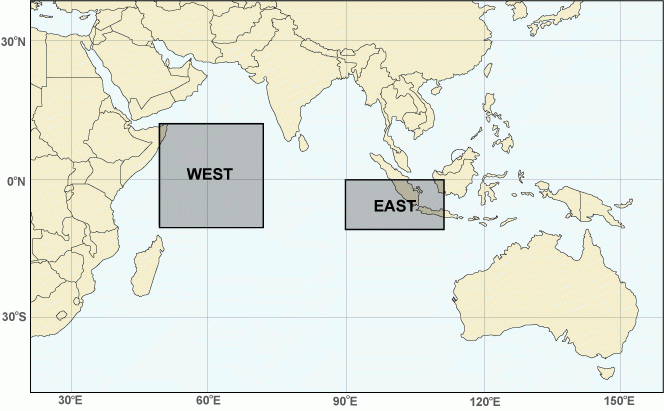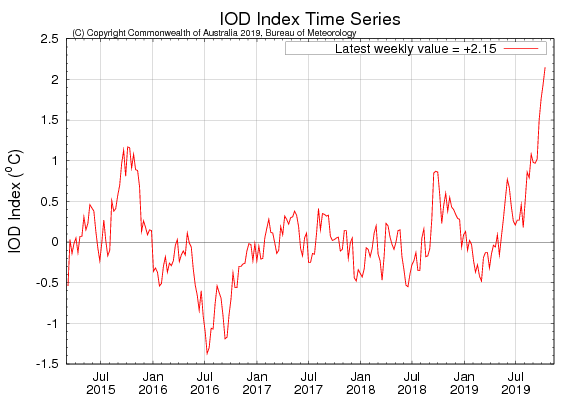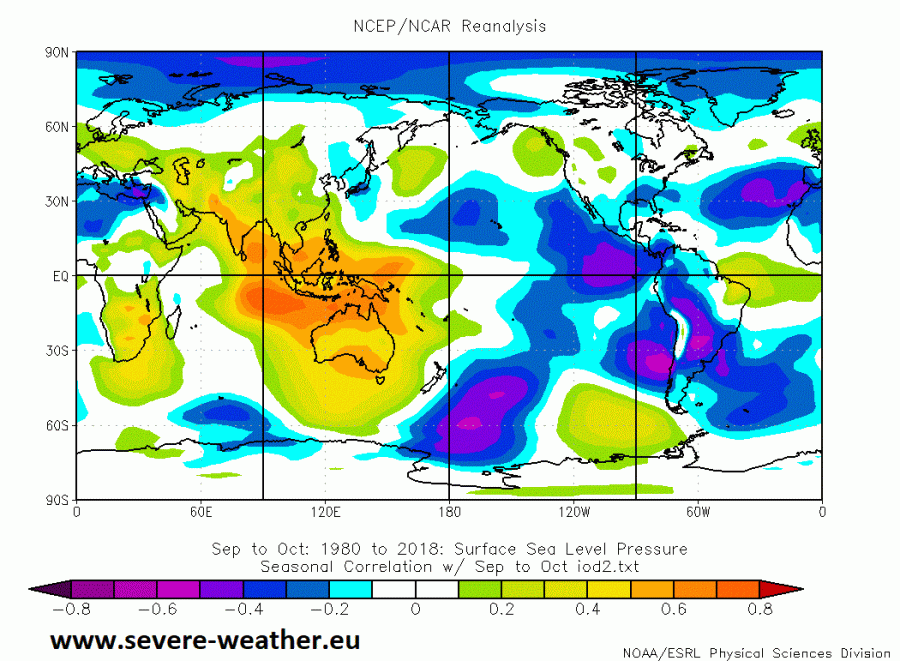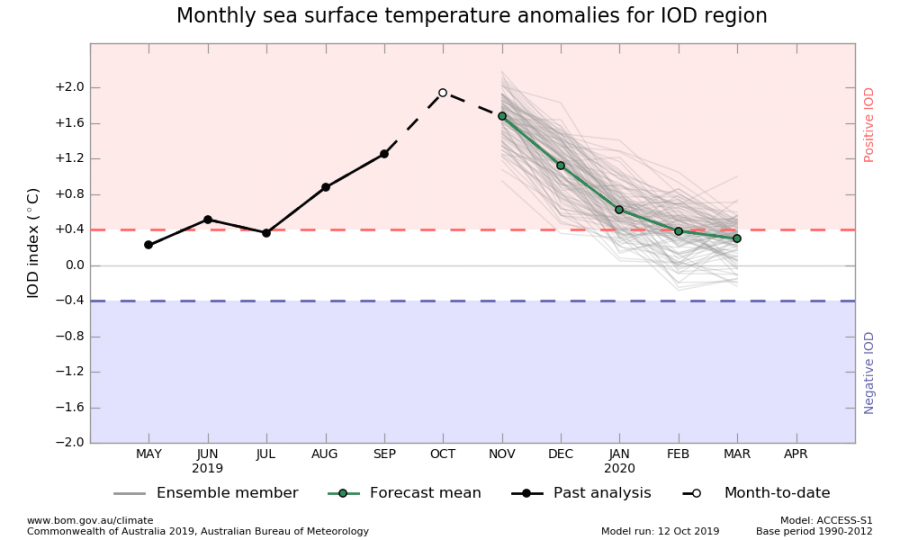There are many global factors and influences that drive our climate and the weather that we feel. A lot of these “drivers” come from the oceans around the world. One such driver (or index) is the Indian Ocean Dipole, also know as the IOD.
As the name already suggests, this index can be found in the Indian Ocean, and consists of two poles (hence the name “dipole”). The east pole can be found around Sumatra, Indonesia. The west pole is in the western Indian Ocean.
The IOD is basically an imbalance in sea water temperature between these two regions, east and west, as we can see on the sea surface temperature chart below. We have cooler waters in the east region and warmer waters in the west region. The chart represents ocean temperature anomalies (temperature compared to the long term average). This corresponds to a positive IOD event (cold east – warm west).
If we look at the actual temperatures, we can see the cooler waters in the east region and much warmer waters in the west. This change occurred because unusually strong Eastern winds were blowing in the east region, pushing warmer waters towards the west, and causing colder deeper water to rise to the surface in the eastern region.
As the winds cool the east and warm the west, the pattern of tropical convection changes. Tropical convection favors warmer waters, so we see lower pressure, more rain and storms in the west , where we have warmer waters. And we see the opposite in the east parts, where we have higher pressure, less rain and storms and drier conditions across the region over Indonesia and Australia. The graphic below is a simplified depiction of a positive IOD event.
This year the IOD is unusually strong, reaching record values for at least the past 60-80 years! The positive phase was initiated in June, but it wasn’t until late September that it has started to strengthen quickly, as the waters in the eastern pole were cooling rapidly, due to the strong easterly winds.
With the reduction of tropical convection in the eastern parts and the air pressure rising, Australia is usually experiencing less precipitation in a positive IOD. Looking at the official analysis for the past 3 months, we can see that large part of the country has experienced below average rainfall, and some areas even record low rainfall. This is a textbook signature of a positive IOD event.
The official outlook for November is not much better, since the IOD is at record strength currently, and is forecast to have its effects felt throughout November and into December. Much of the country has very low chances to even reach average rainfall. This raises further drought concerns and highly increases the chance of widespread wildfires, as temperatures rise in the coming weeks, heading towards summer. More rain is expected to arrive later in December, as the IOD strength reduces and the southern hemisphere monsoon initiates.
We have made a correlation map, between surface pressure and the IOD index. This map shows us how the surface pressure corresponds to the IOD index in September and October. We can see that the positive IOD corresponds to pressure rise over Indonesia and Australia, which is exactly what we are observing right now. We can also see hints of higher than average pressure over Europe, which is also what we are witnessing currently. We cannot say that this map shows the exact effects of IOD for the entire world, since it is a simple linear comparison. But it does give us hints about potential regional influence around its wider area of effect, like Africa and even Europe. Even though we cant say that current warm conditions in Europe are purely due to the strong IOD, it is highly likely that it has played some role in the current “Indian summer” in Europe, since it is relatively close to the European sector, and by having a major influence on the African and subtropical pressure patterns. It is a great example of how connected and influential the global circulation system is.
Correlation of pressure and the IOD Index. Graphic by NCEP/NCAR.
The IOD is expected to weaken, as the southern hemispheric seasonal monsoon starts in late spring (November-December), causing another phase of changes in wind patterns, which do not support the IOD. This is a usual procedure in IOD events. This year the IOD is unusually strong, so it might last slightly longer than normal, deep into late December, but it will eventually return to neutral values as the wind/pressure patterns will not support the positive phase. This should bring much needed rainfall to parts of Australia.







